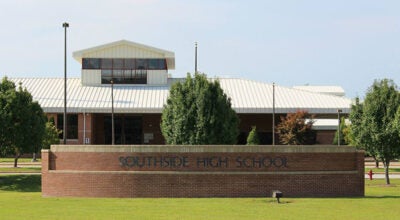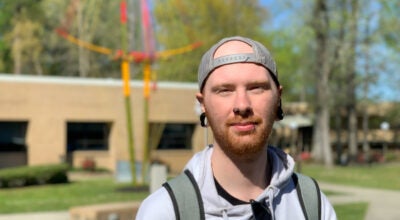BCCC building receives LEED certification
Published 3:30 am Saturday, May 4, 2013

The Katie G. Paul Allied Health and Nursing Building on the campus of Beaufort County Community College has been recognized for its energy-saving design and construction, college and county leaders recently announced.
The building, located on the eastern end of the college campus, has received Leadership in Energy and Environmental Design, or LEED, Certification from the U.S. Green Building Council.
It is the first public building in Beaufort County to receive the certification, according to the building’s architect, John K. Farkas of Greenville.
Farkas presented a plaque designating LEED Certification to Jerry Langley, chairman of the Beaufort County Board of Commissioners, and Russell Smith, chairman of the Beaufort County Community College Board of Trustees, at a meeting of the two boards held recently on the BCCC campus.
“The LEED Certification is proof that this project excels in energy savings and environmentally conscious design and operation,” Farkas said.
Developed by the U.S. Green Building Council, LEED Certification is intended to provide building owners and operators a concise framework for identifying and implementing practical and measurable green building design, construction, operations and maintenance solutions.
To receive LEED Certification, buildings must meet technical criteria that are publicly reviewed for approval by the almost 20,000 member organizations that currently constitute the USGBC.
“Beaufort County Community College is proud of this certification,” said BCCC President Barbara Tansey. “It shows not only our concern for the environment but also our concern for the wise use of taxpayer dollars through the efficient operation of our buildings.”
The 30,600 square-foot Katie G. Paul Building houses the college’s health sciences programs including the Associate Degree and Practical Nursing, Medical Laboratory Technology and Certified Nurse Aide I and II programs.
The building incorporates several innovations aimed at improving energy efficiency and was built to state energy efficiency standards of a 20 percent improvement over standard design.
Its cost of some $6.8 million were paid through grants and loans taken by the county and the college including a U.S. Economic Development Administration grant of $2.5 million, U.S. Department of Agriculture loans and grants totaling $3.3 million, a Golden LEAF Foundation grant for a nursing simulation laboratory and other equipment and state appropriations of $300,000.




